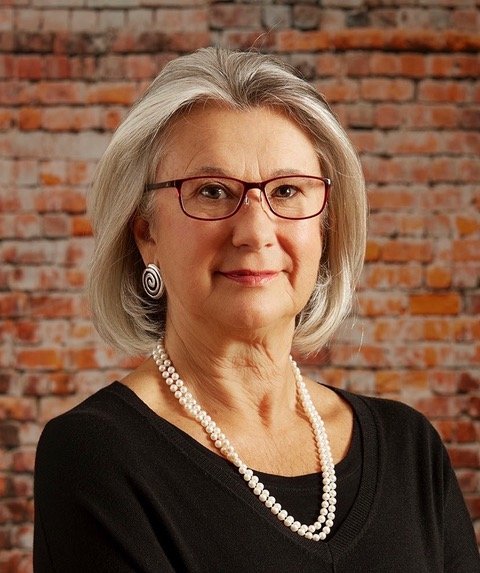Reflections on the Founding of the United Religions Initiative
Creating the Blessed Community
by Diana Whitney
I was in India, teaching Appreciative Inquiry and leading a leadership retreat with colleagues Dinesh Chandra and Anil Sachdev, when one of my co-founders of the Taos Institute, David Cooperrider, emailed me. He said he had told William Swing, the Episcopal Bishop of California, that we, meaning he and me and a number of David’s graduate students, would help create a global interfaith organization akin to a United Nations for religions.
David knew I had written a couple of articles on spirituality, that my own spiritual journey spanned Christianity, Judaism, and Lakota practices, combined with my mastery as a designer and facilitator of processes for complex, largescale social change. In an attempt to persuade me, he went on to say he hoped I would be interested enough to at least talk with the new project’s executive director, Rev. Charles Gibbs. I was indeed interested, and soon we had a call that would lead me to say yes to the dream that became the United Religions Initiative (URI).
It was a formative time in the development of Appreciative Inquiry as a process for global transformation. A group of loosely connected consultants, leaders, and graduate students were experimenting with Appreciative Inquiry in non-profit organizations, communities and businesses around the world. We shared a loose set of principles, an emerging set of practices, and an unwavering conviction that the world needed what we had to offer – a collaborative way of engaging people to imagine and create their desired futures based upon inquiry into their most meaningful and successful experiences. Most of the experiments were small.
David Cooperrider and I, however, were working with a team at GTE as it reimagined itself from being a telephone company to what would become Verizon, a leading telecommunication company. Our work using Appreciative Inquiry to engage thousands of people across the country, in groups of 200 people at a time, in person and via satellite, won the ASTD (American Society for Training & Development) award for “Best Culture Transformation.” It set the stage for a model of large appreciative inquiry meetings, called the Appreciative Inquiry Summit.
It was this model of Appreciative Inquiry that we used to design and facilitate five annual interfaith gatherings averaging approximately 200 people. By following what we have come to call the 4-D Cycle of Appreciative Inquiry, we were able to guide highly diverse groups of people to respectfully:
Discover and share the best of their own religions, faith traditions and indigenous practices, with a special focus on what each tradition teaches about peace among people and with all living beings.
Imagine an organization that would welcome and include everyone; and collaboratively co-create a clear preamble, purpose, and set of principles that delineates the essence of how people interact with one another.
Design an organization with both roots and wings; roots to serve in their local communities; and wings to meet and share with the larger organization.
Create the foundational practices and structures that have supported the United Religions Initiative to grow around the world as a force for enduring daily interfaith cooperation.
The positive life affirming bias of Appreciative Inquiry enabled participants, including us facilitators, to meet others, often people we considered “the other,” to hear stories of religious conviction in the face of persecution, unconditional love in the presence of oppression, and dedication to interfaith peacebuilding across lines often fraught with violence. We met each other, and with the magic of Appreciative Inquiry, barriers dropped, and we fell in love. Personally, my Appreciative Interview with Rev. Wesley Mabuza of South Africa brought tears to our eyes, opened our hearts, and gave us hope. That interview is one of many deeply touching experiences that called me to serve as a volunteer consultant to the URI, its Global Council, and Executive Directory for close to 20 years.
Photo: URI Facebook
As the URI was formed and grew, so too did I, across the time and places where we met, from San Francisco, California to Seoul, Korea, to a multitude of other sites. Through these meetings, I made life-long friends, people who have informed who I have become, and still do! I have learned about different religions, faith traditions, and indigenous spirituality by experiencing them directly with URI friends around the world. When I tell the story of the URI it is sure to include my gratitude for meeting and being welcomed by the Brahma Kumari, a global community of women spiritual leaders. I am a fuller person because U-R-I.
To this day, I frequently describe URI as an exemplary model of grassroots decentralized organizing, worth knowing about and emulating. When we began, we used Appreciative Inquiry to study successful social movements and values-based organizations, to inform our imaginings about the potential for a united religions organization. Today, the URI has come to fruition in more than a thousand locations around the world as a life affirming organization for interfaith communication and cooperation. It is among the greatest gifts of my life to have been there from the start and to have my signature on the Charter, signed in Pittsburgh, Pennsylvania, June 28, 2000.
Header Photo: Pixabay




